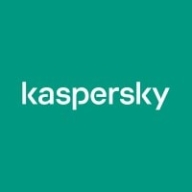

Kaspersky Anti-Targeted Attack Platform and Trend Vision One compete in the cybersecurity sector. Trend Vision One is considered superior for its comprehensive features, offering better integration and cloud utility, which could be a worthy investment despite higher pricing.
Features: Kaspersky Anti-Targeted Attack Platform provides advanced threat detection, detailed threat intelligence, and in-depth analytics. Trend Vision One excels with integration capabilities, cloud-based insights, and advanced detection and response features.
Room for Improvement: Kaspersky can improve its ease of deployment, customer service model, and integration capabilities. Trend Vision One could enhance pricing options, streamline the feature set to improve ease of use, and reduce deployment complexity.
Ease of Deployment and Customer Service: Trend Vision One offers streamlined cloud-based deployment and efficient onboarding. Its responsive customer service makes it more user-friendly. Kaspersky's deployment is more labor-intensive and its support model is more traditional.
Pricing and ROI: Kaspersky provides competitive pricing and strong ROI for mid-sized enterprises. Trend Vision One requires higher initial investment but offers greater value with integrated security solutions, resulting in good ROI for those with advanced security needs.
| Product | Market Share (%) |
|---|---|
| Trend Vision One | 2.5% |
| Kaspersky Anti-Targeted Attack Platform | 0.3% |
| Other | 97.2% |


| Company Size | Count |
|---|---|
| Small Business | 38 |
| Midsize Enterprise | 11 |
| Large Enterprise | 34 |
Today’s cybercriminals constantly design unique and innovative methods of penetration and compromise. To avoid perimeter prevention technologies they use social engineering, non-malware and supply chain attacks to operate under the radar of security designed to catch ‘bad’ traces. It’s not enough to just ‘know’ what’s bad or dangerous – enterprises need to understand what’s normal, and use AI-driven techniques that simplify and automate this process. Targeted Attack Analyzer is a machine learning engine that involves self-learning to establish the baseline of normal, legitimate activities of an entire network. Through continuous network telemetry collection it finds deviations, detects suspicious activities and predicts further malicious actions at the initial stages of multilayered attacks.
Trend Vision One offers comprehensive protection for endpoints, networks, and email with centralized visibility. It is valued for its attack surface management, real-time threat detection, integrated management, ease of deployment, and user-friendly interface.
Trend Vision One provides a sophisticated security platform combining endpoint, network, and email protection with features like virtual patching and advanced AI capabilities. Its centralized management and integration with platforms like Office 365 and Azure make it an attractive option for organizations needing streamlined workflows and efficient risk management. While it boasts robust integrations and ease of use, enhancements are needed in reporting, tool integration, and reducing false positives. Users call for better support infrastructure, faster response times, and improved threat intelligence capabilities. Despite some complexity, its AI and ML features significantly enhance threat detection and response.
What Features Define Trend Vision One?
What Benefits Should Users Look For?
Trend Vision One is implemented in industries that require endpoint protection, ransomware defense, and incident response, being flexible for both on-premises and cloud environments. It is used to monitor servers, networks, and endpoints, providing features like email protection, behavioral detection, and threat visibility. Organizations benefit from AI and ML, improving their security posture and response capabilities.
We monitor all Endpoint Detection and Response (EDR) reviews to prevent fraudulent reviews and keep review quality high. We do not post reviews by company employees or direct competitors. We validate each review for authenticity via cross-reference with LinkedIn, and personal follow-up with the reviewer when necessary.